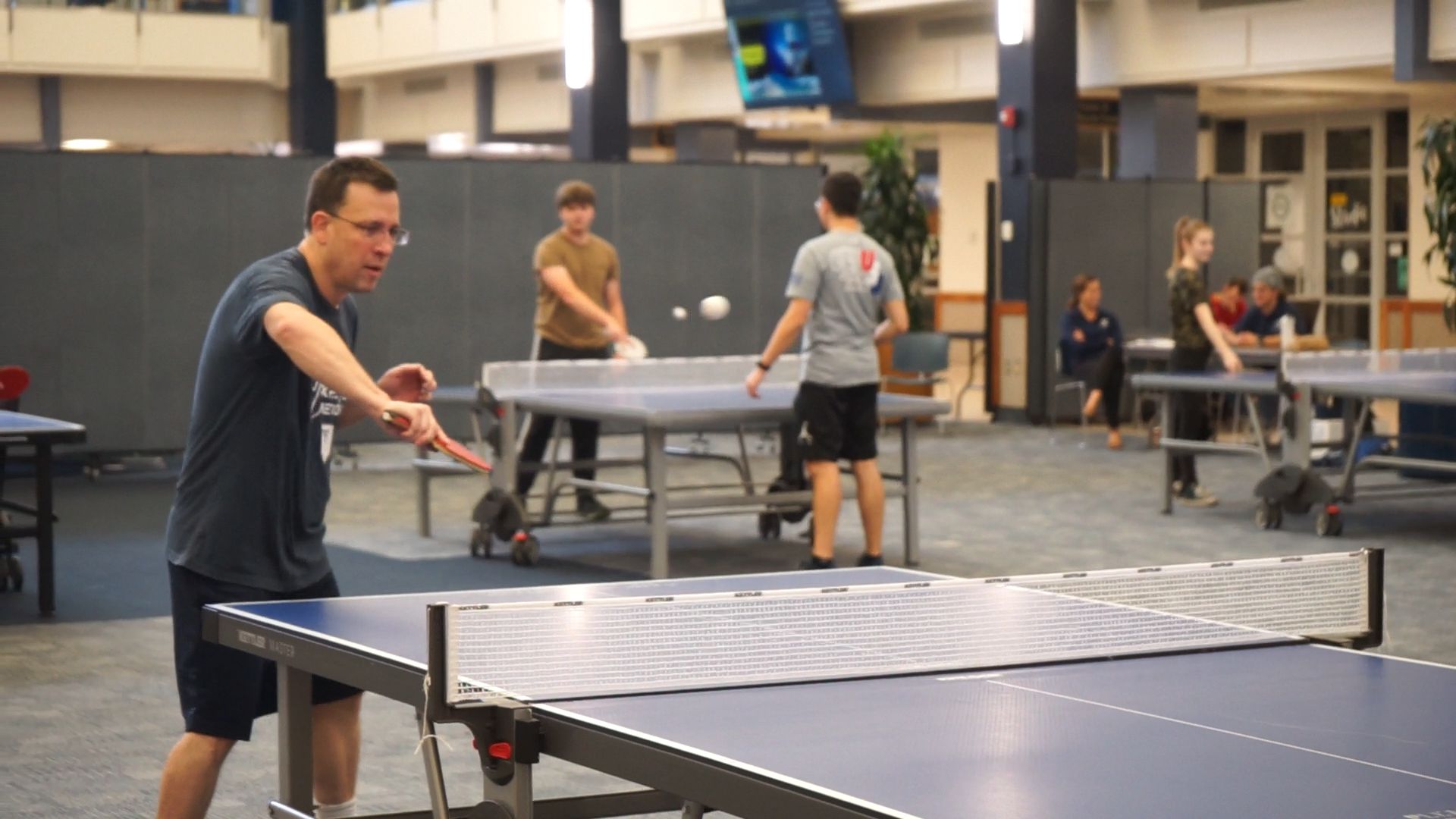
On February 5th 2022, Dr. John Colton won the BYU intramurals table tennis (ping pong)tournament. There were 5 “skill” brackets, allowing both beginners and experienced table tennis masters to participate. Many came to have fun and compete over the title of being BYU’s greatest table tennis player, but only one person could come out on top and John won gold for the highest skill bracket!
Dr. Colton has been a faculty member of the BYU Department of Physics and Astronomy since 2007, whose research interests are focused on semiconductor nanostructures. He’s played table tennis for years in many different capacities. He got into table tennis for fun as a BYU undergrad, and has only played more intensely since then. His skill in table tennis increased in graduate school, and Dr. Colton officially joined his first table tennis club as a postdoc at the Naval Research Lab. He then was a professor at the Univ. of Wisconsin, La Crosse, but there weren’t very good table tennis options there so he came to BYU to stay in 2007. He has been playing frequently since.
When asked if his knowledge of physics that he has gained in his career have contributed to his success in the realm of table tennis, he smilingly responded “No. People like to joke that since I’m a physics professor I will know exactly how the table tennis balls will move when I hit them, since I understand spin and the Bernoulli effect. In reality any advantage that might give me can be matched by a few hours of observation and practice.”
In addition to Dr. Colton’s ping pong wizardry, he’s also the A Cappella Club advisor and the co-organizer of the first-ever department ultimate Frisbee team —which made it to the finals last year. Dr. Richard Sandberg, Dr. Denise Stephens, and Dr. Ben Frandsen have also played on the team.
We’re proud of our faculty who excel in their fields of studywhile still finding time to have fun within the campus community.
Student Authors: Aidan Gillam, Ryan Scott, and Tyler Harding
Edited by Brian Anderson
News and Events














